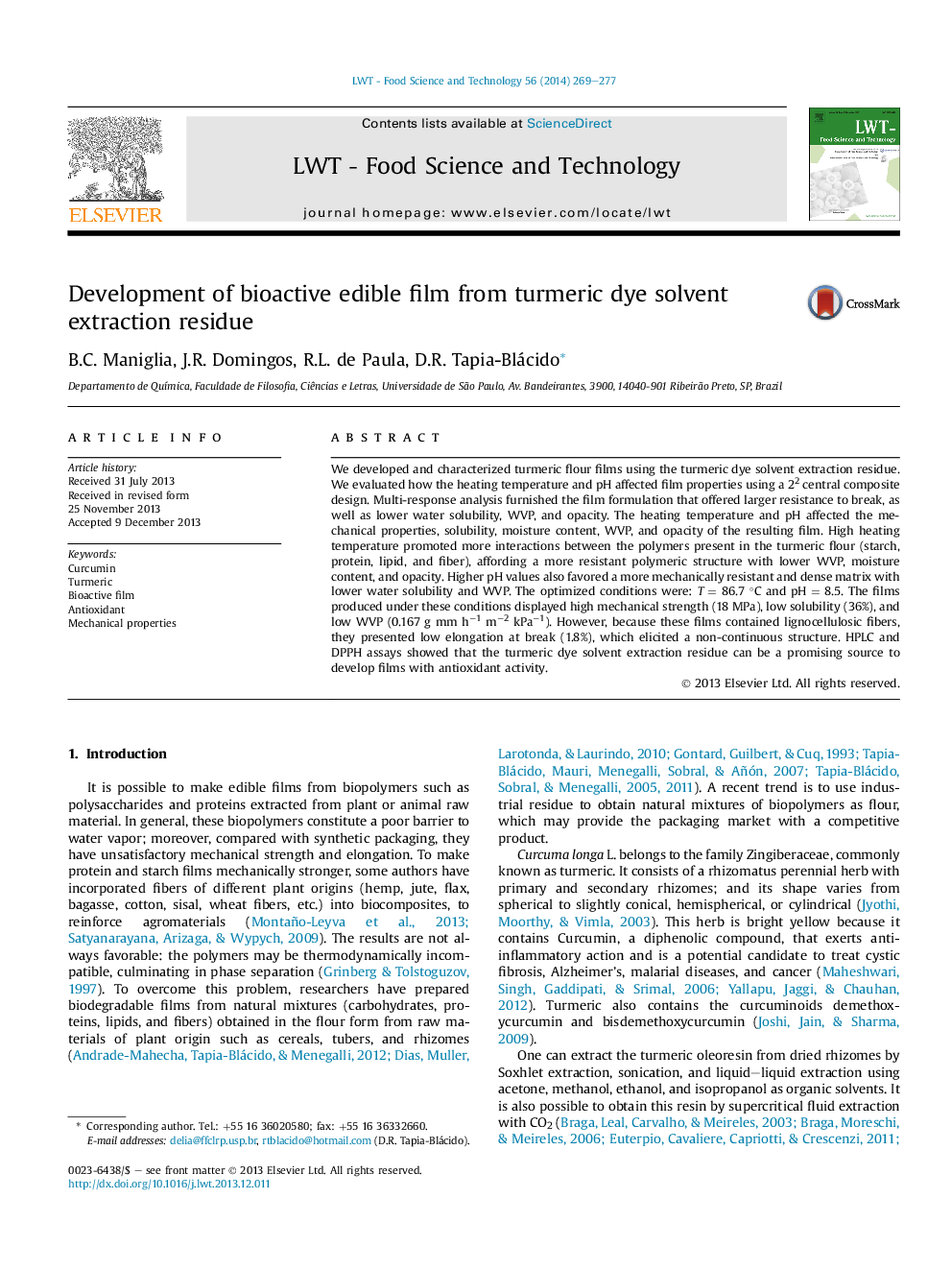| کد مقاله | کد نشریه | سال انتشار | مقاله انگلیسی | نسخه تمام متن |
|---|---|---|---|---|
| 6404278 | 1330901 | 2014 | 9 صفحه PDF | دانلود رایگان |
- The filmogenic capacity of the turmeric dye extraction residue was evaluated.
- Heating temperature and pH affect the turmeric flour film properties.
- The optimal process conditions to obtain turmeric flour film have been established.
- The films contain curcuminoids and effective antioxidant activity.
- The films present larger mechanical strength, and lower WVP and solubility.
We developed and characterized turmeric flour films using the turmeric dye solvent extraction residue. We evaluated how the heating temperature and pH affected film properties using a 22 central composite design. Multi-response analysis furnished the film formulation that offered larger resistance to break, as well as lower water solubility, WVP, and opacity. The heating temperature and pH affected the mechanical properties, solubility, moisture content, WVP, and opacity of the resulting film. High heating temperature promoted more interactions between the polymers present in the turmeric flour (starch, protein, lipid, and fiber), affording a more resistant polymeric structure with lower WVP, moisture content, and opacity. Higher pH values also favored a more mechanically resistant and dense matrix with lower water solubility and WVP. The optimized conditions were: T = 86.7 °C and pH = 8.5. The films produced under these conditions displayed high mechanical strength (18 MPa), low solubility (36%), and low WVP (0.167 g mm hâ1 mâ2 kPaâ1). However, because these films contained lignocellulosic fibers, they presented low elongation at break (1.8%), which elicited a non-continuous structure. HPLC and DPPH assays showed that the turmeric dye solvent extraction residue can be a promising source to develop films with antioxidant activity.
Journal: LWT - Food Science and Technology - Volume 56, Issue 2, May 2014, Pages 269-277
